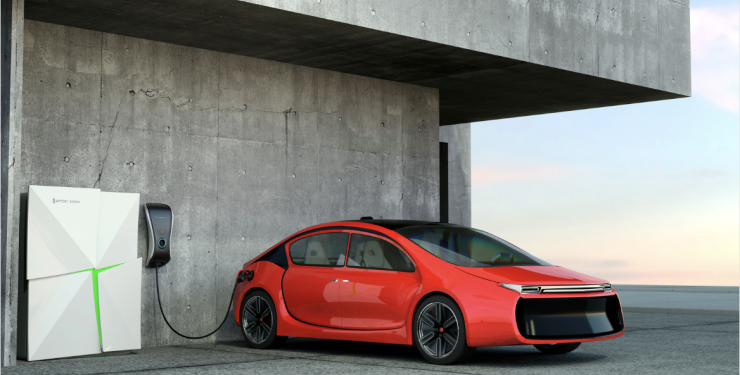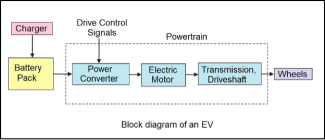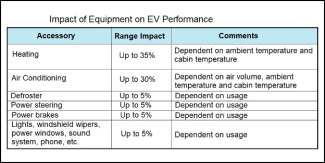Top 40 Electric Vehicle Terms To Recharge Your Vocabulary
The Electric Vehicles (EV) industry has exploded on to today’s business scene and is growing in importance daily. If you're interested in EVs and its supporting industry infrastructure, it's important to understand some of the business’s key terms. Here’s our list of the top 40 most important EV terms to help you prepare to participate in this dynamic and expanding field of work.

Types of Electric Vehicles
Autonomous Vehicle: A vehicle that operates and performs on its own with no human intervention. The vehicle can operate and perform on its own by using its ability to sense its own surroundings.
BEV (Battery Electric Vehicle): A vehicle that can be run completely by an electric motor. A BEV is powered solely by rechargeable electric batteries instead of an internal combustion engine (ICE).
FCEV (Fuel Cell Electric Vehicle): A FCEV is a kind of Electric Vehicle that uses a fuel cell to power its electric traction motor. Hydrogen fuel that is stored in a tank combines with the oxygen from air and produces electricity, with water vapor as a by-product.
FHEV (Full Hybrid Electric Vehicle): A FHEV is a type of hybrid electric vehicle. Unlike a PHEV, FHEV recharges its electric battery using its gas-powered engine only and is not connected to any external power source.
HEV (Hybrid Electric Vehicle): A Vehicle that is combined with a conventional internal combustion engine (ICE) and an electric motor to drive the car. HEVs are usually powered by an ICE to run the car and energy for the batter is gained through regenerative braking, which eventually runs the motor.
MHEV (Mild Hybrid Electric Vehicle): A mild hybrid electric vehicle (MHEV) blends a traditional fuel combustion engine and an electric motor. Unlike a full hybrid vehicle, which can travel short distances at low speeds solely on electricity, an MHEV never operates as an electric vehicle. Instead, it allows the ICE to shut off when coasting or braking etc.
PHEV (Plug-In Hybrid Electric Vehicle): Like an HEV, a PHEV is also a combination of an internal combustion engine and an electric motor. PHEV differs from a regular HEV by having a larger rechargeable battery and that can be restored to full charge by connecting a plug to an external electric power source.
Powertrain and Components

A powertrain provides power to a vehicle and refers to the set of components that generate the power required to move the vehicle and deliver it to the wheels. In an ICE-powered vehicle, the energy for the powertrain is generated by an internal combustion engine (ICE), and in an electric vehicle (EV) it is generated by an electric motor (EM)
Regenerative Braking: Regenerative braking systems use kinetic energy which is produced from the friction between the disc and brake pads of a conventional brake and converts it into the electricity which eventually runs the motor of the hybrid electric vehicle instead of dissipating it into the environment in the form of heat.
Battery pack: A battery pack is made up of multiple lithium-ion cells that store the energy required to power the vehicle. Direct current (DC) output is provided by the battery pack.
DC-AC Converter: The battery pack's DC energy is converted to AC and delivered to the electric motor. A motor control system (also known as the powertrain ECU) manages the frequency and magnitude of the voltage provided to the electric motor to manage the speed and acceleration in accordance with the driver's directions and are conveyed via the accelerator and brakes.
Electric Motor: Electric motors transform electrical energy into mechanical energy, which is then sent through a single-ratio transmission to the wheels. Many EVs employ motor generators with regeneration capabilities.
OBC (On-board Charger): These converts alternating current (AC) received through the charge port to direct current (DC) and regulates the amount of current flowing into the battery pack.
Infrastructure
EVSE (Electric Vehicle Supply Equipment): EVSE supplies electricity to an electric vehicle (EV). They are commonly called charging stations or charging docks. EVSE systems include the electrical conductors, related equipment, software, and communications protocols that deliver energy efficiently and safely to the vehicle.
Electric Vehicle Charging Connector Types
Type 1: Type 1 is a single-phase plug and is standard for EVs from North American vehicles. It allows charging at up to 7.4 kW.
Type 2: Type 2 plugs are three-phase connectors that provide fast AC charging at a rate up to 43 kW at public charging stations. Type 2 plug is standard for European and Asian vehicles.
L2 – j1772: This type of connector is used for “Level 1” and “Level 2” AC charging which are considerably slower than DC Fast Charging.
CHAdeMO (Charge de Move): This plug is only used for rapid charging, and it's compatible with most electric cars manufactured by Asian brands. It can also offer Vehicle to Grid, but with less power than CCS.
CSS (Combined Charging Systems): This EU-standard connector employs three of the Type 2s pins and combines two DC pins that are positioned below the Type 2 AC connector. commonly found on Type 2 BEVs.
UK 3 pin: This plug is typically used in a UK socket. ChargePoint safety, speed, and security characteristics of a dedicated ChargePoint are lacking, however, this connector can be used to charge some EVs in an emergency.
Tesla Plug: A proprietary connector that is used on level 2 and level 3 superchargers in Tesla charging stations and is only compatible with the Tesla EVs
Charging Levels
Level 1: A Level 1 or AC level 1 charging system is used typically with a standard household outlet. It provides a charge that goes up to 120V and between 8A and 20A. level 1 charging takes a long time, (over 20 hours), to fully charge an empty EV due to a limitation of low power flow.
Level 2: A Level 2 or AC level 2 charges EVs faster than the level 1 with a higher output 240V power source. It takes up to 3 to 4 hours to fully charge an Electric Vehicle at level 2.
Level 3: This is also called DC fast Charging and is the fastest charging level. EV batteries charge quickly at this level because of the charging point that uses direct current. It takes 15 to 45 min for an EV battery to charge fully. The level of charging goes up to 900V at over 100A.
Control & Power Management
BMS (Battery Management System): An electronic system that manages a rechargeable battery to ensure it operates safely and efficiently. BMS monitors a battery system to protect the battery from premature aging and to ensure that the battery capacity is used to the maximum.
CAN (Controller Area Network) Protocol: A serial communication bus designed for robust and flexible performance in the harsh environment, and particularly for industrial and automotive application.
EV Range: EV range represents the distance that a vehicle can travel on a single charge. Most new EVs can go 200 to 400 miles / (also add distance in KMs ) on a single charge.

mi/kWh (Miles Per Kilowatt Hour): mi/kWh represents how many miles a vehicle can go using 1 kWh of energy. If an EV has a battery size of 60 kWh (kilo watt hour) and the efficiency is 3 mi/kW, it can go 180 miles on average if the battery is fully charged.
MPGe (Mile Per Gallon Equivalent): The distance in miles an EV can travel on the equivalent amount of electrical energy. The energy contained in 1 gallon of gas is equivalent to 33.7 kWh (kilowatt hours) of electricity.
SOH (State of Health): SOH of a battery represents a measure of the battery's ability to store and deliver electrical energy, compared with a capacity of a new battery. It is defined as the ratio of the maximum battery charge to its rated capacity and expressed as a percentage.
SOC (State of Charge): State of charge indicates the amount of energy available in a battery at a specific point of time. SOC is expressed as a percentage, and it is similar to a fuel indicator of a fossil fuel driven vehicle.
VCU (Vehicle Control Unit): A domain controller for EVs and Hybrids that can balance the system energy, optimize torque, control the motor, battery pack and the on-board charging system.
Becoming an EV expert
If you are interested in developing your career in electric vehicles, you’ll need to become familiar with all the details of this emerging technology and the new vocabulary that’s associated with it. We hope you will keep this list handy, use it as a reference guide and please let us know of any other terms you think we should add to it.
If you're thinking about enrolling in our Electric Vehicle Technician program, and have any questions, please contact us, by calling 1-888-5535333 toll-free or email us at [email protected].
Comments
I can’t believe you put ALL these Terms in ONE place!
Submitted by Julie (not verified) on Thu, 07/13/2023 - 15:45

Thank you , I am stressed trying to pick where I train online. It keeps coming back to you. The courses you offer, the way you offer them, the cost, AND The options you offer on HOW to pay. Not to mention the software you provide for real Lab virtual hands on, blah blah, whatever the verbiage. I am definitely matched with my learning venture towards my career in EV Technology. Thanks Again